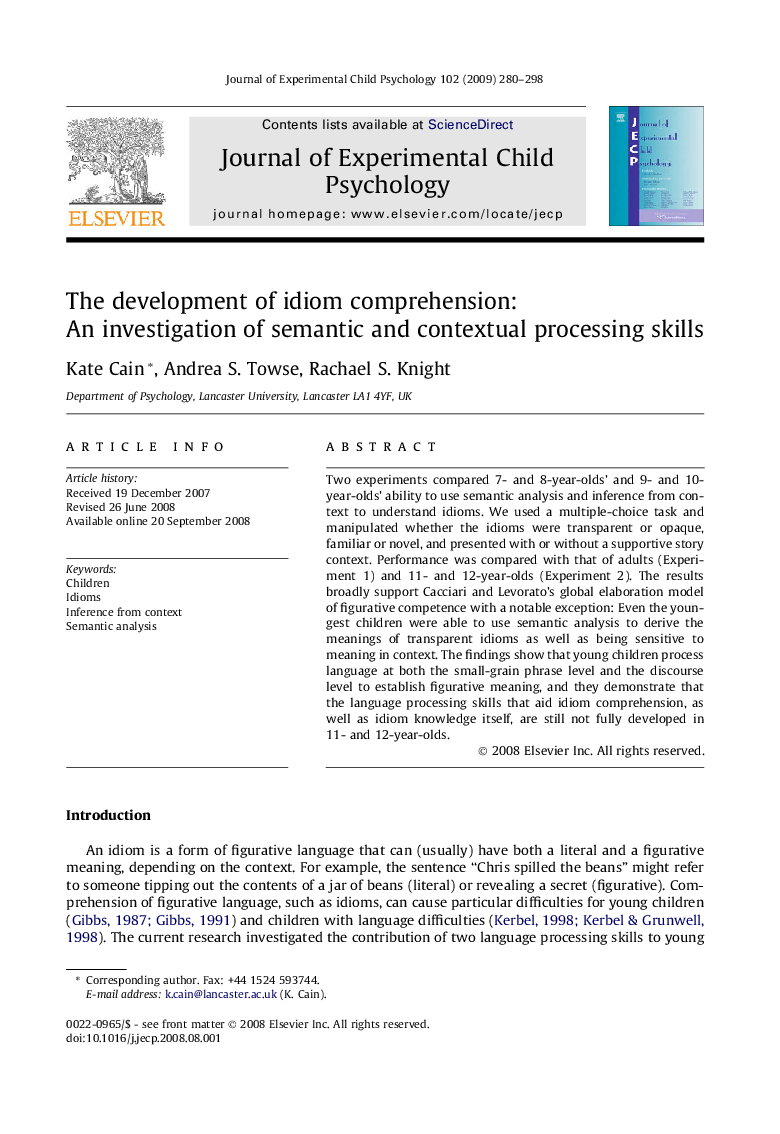| Article ID | Journal | Published Year | Pages | File Type |
|---|---|---|---|---|
| 918632 | Journal of Experimental Child Psychology | 2009 | 19 Pages |
Two experiments compared 7- and 8-year-olds’ and 9- and 10-year-olds’ ability to use semantic analysis and inference from context to understand idioms. We used a multiple-choice task and manipulated whether the idioms were transparent or opaque, familiar or novel, and presented with or without a supportive story context. Performance was compared with that of adults (Experiment 1) and 11- and 12-year-olds (Experiment 2). The results broadly support Cacciari and Levorato’s global elaboration model of figurative competence with a notable exception: Even the youngest children were able to use semantic analysis to derive the meanings of transparent idioms as well as being sensitive to meaning in context. The findings show that young children process language at both the small-grain phrase level and the discourse level to establish figurative meaning, and they demonstrate that the language processing skills that aid idiom comprehension, as well as idiom knowledge itself, are still not fully developed in 11- and 12-year-olds.
